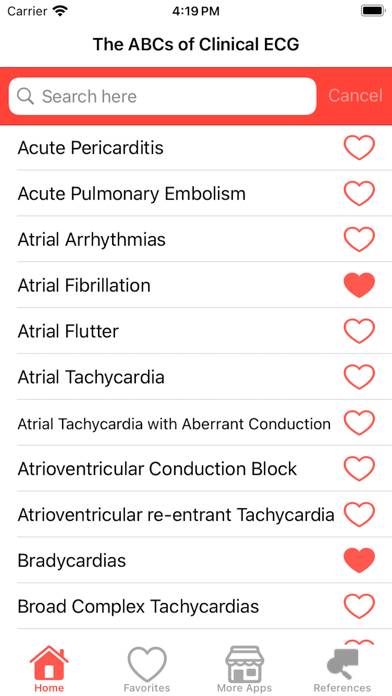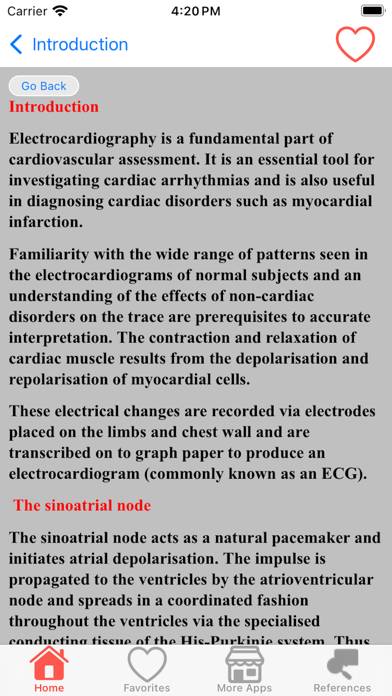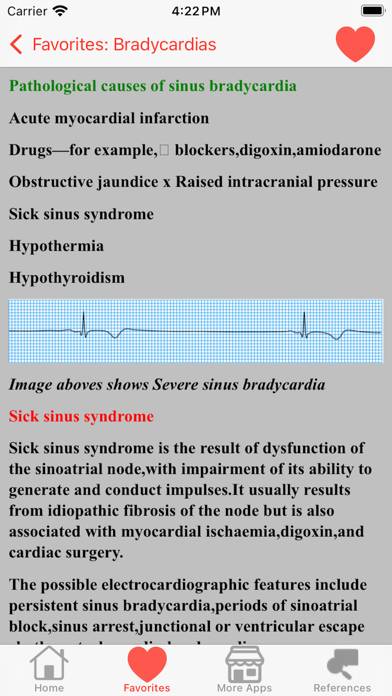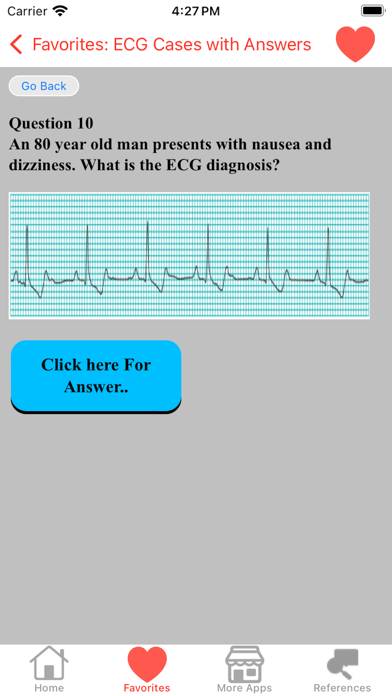How to Delete Clinical ECG Interpretation
Published by: Abdulkarim NasirRelease Date: August 07, 2024
Need to cancel your Clinical ECG Interpretation subscription or delete the app? This guide provides step-by-step instructions for iPhones, Android devices, PCs (Windows/Mac), and PayPal. Remember to cancel at least 24 hours before your trial ends to avoid charges.
Guide to Cancel and Delete Clinical ECG Interpretation
Table of Contents:




Clinical ECG Interpretation Unsubscribe Instructions
Unsubscribing from Clinical ECG Interpretation is easy. Follow these steps based on your device:
Canceling Clinical ECG Interpretation Subscription on iPhone or iPad:
- Open the Settings app.
- Tap your name at the top to access your Apple ID.
- Tap Subscriptions.
- Here, you'll see all your active subscriptions. Find Clinical ECG Interpretation and tap on it.
- Press Cancel Subscription.
Canceling Clinical ECG Interpretation Subscription on Android:
- Open the Google Play Store.
- Ensure you’re signed in to the correct Google Account.
- Tap the Menu icon, then Subscriptions.
- Select Clinical ECG Interpretation and tap Cancel Subscription.
Canceling Clinical ECG Interpretation Subscription on Paypal:
- Log into your PayPal account.
- Click the Settings icon.
- Navigate to Payments, then Manage Automatic Payments.
- Find Clinical ECG Interpretation and click Cancel.
Congratulations! Your Clinical ECG Interpretation subscription is canceled, but you can still use the service until the end of the billing cycle.
How to Delete Clinical ECG Interpretation - Abdulkarim Nasir from Your iOS or Android
Delete Clinical ECG Interpretation from iPhone or iPad:
To delete Clinical ECG Interpretation from your iOS device, follow these steps:
- Locate the Clinical ECG Interpretation app on your home screen.
- Long press the app until options appear.
- Select Remove App and confirm.
Delete Clinical ECG Interpretation from Android:
- Find Clinical ECG Interpretation in your app drawer or home screen.
- Long press the app and drag it to Uninstall.
- Confirm to uninstall.
Note: Deleting the app does not stop payments.
How to Get a Refund
If you think you’ve been wrongfully billed or want a refund for Clinical ECG Interpretation, here’s what to do:
- Apple Support (for App Store purchases)
- Google Play Support (for Android purchases)
If you need help unsubscribing or further assistance, visit the Clinical ECG Interpretation forum. Our community is ready to help!
What is Clinical ECG Interpretation?
Electrocardiography is the process of producing an electrocardiogram (ECG or EKG), a recording of the heart's electrical activity through repeated cardiac cycles. It is an electrogram of the heart which is a graph of voltage versus time of the electrical activity of the heart using electrodes placed on the skin. These electrodes detect the small electrical changes that are a consequence of cardiac muscle depolarization followed by repolarization during each cardiac cycle (heartbeat).
During each heartbeat, a healthy heart has an orderly progression of depolarization that starts with pacemaker cells in the sinoatrial node, spreads throughout the atrium, and passes through the atrioventricular node down into the bundle of His and into the Purkinje fibers, spreading down and to the left throughout the ventricles. This orderly pattern of depolarization gives rise to the characteristic ECG tracing. To the trained clinician, an ECG conveys a large amount of information about the structure of the heart and the function of its electrical conduction system. Among other things, an ECG can be used to measure the rate and rhythm of heartbeats, the size and position of the heart chambers, the presence of any damage to the heart's muscle cells or conduction system, the effects of heart drugs, and the function of implanted pacemakers.
App content:
1. Introduction
ECG history
Leads